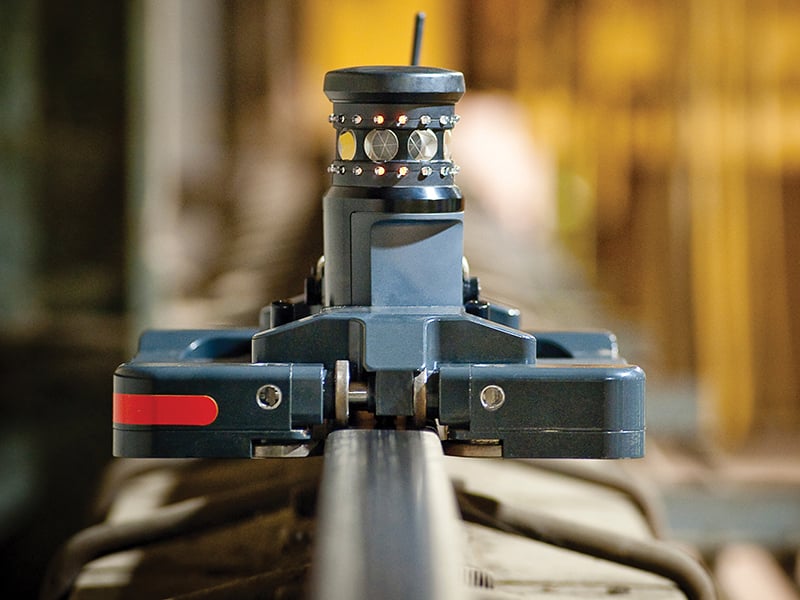Article
Overhead crane rail inspections
Josh Stover, Konecranes
 Misaligned overhead crane runways cause wear on crane wheels, wheel flanges, bearings and rails. Left uncorrected, they can result in accidents, failure or derailment of overhead cranes and can lead to loss of productivity and costly downtime required for repair and replacement of expensive parts.
Misaligned overhead crane runways cause wear on crane wheels, wheel flanges, bearings and rails. Left uncorrected, they can result in accidents, failure or derailment of overhead cranes and can lead to loss of productivity and costly downtime required for repair and replacement of expensive parts.
For this reason, I recommend that crane users schedule regular visual rail inspections and regularly look and listen for the sights and sounds of wheel and rail wear. This way, problems can be identified and a plan can be made for correction before they become serious.
Just like regularly scheduled overhead crane inspections, crane rail inspections pay dividends in improved safety and productivity.
As a follow-up to visual rail inspections, laser rail surveys – such as our RailQ Runway Survey – provide multi-dimensional assessments of runway alignment to diagnose problems and develop a plan for corrective action.
Using state-of-the-art laser technology, proprietary software and a robot that rides the rails, RailQ checks the span, elevation and straightness of the runway. The survey measures each rail individually and in relation to the other rail.
The survey provides a clear picture of what is going on with the runway and shows what adjustments are needed to bring the rails back into alignment and within tolerances required by the Crane Manufacturers Association of America (CMAA).
Save time and increase safety
RailQ can reduce runway surveying time, as it assesses all dimensions in one measurement. RailQ also increases the safety of the rail survey because it does not require the inspector to walk the runway during the survey. However, the amount of time required for a laser rail survey varies depending on runway length and the condition of the rails. Just as it can affect overhead cranes, a runway that has a badly worn rail can slow down the robot.
RailQ crane inspections must be conducted around a customer’s production schedule. Production equipment, such as presses, must be turned off during an inspection, because vibrations from the machinery can throw off readings of crane inspections.
Comprehensive report provides recommendations
Our engineers analyze the measurements collected in the RailQ survey and develop a report that outlines adjustments required to bring the rails back to CMAA tolerances. The report recommends a plan of action and is shared with the customer, along with quotes for the work, which could include adjustments and repairs to the runway, as well as replacement of worn wheels, bearings and other parts of overhead cranes affected by the runway misalignment.
Learn more about the RailQ 3D Runway Survey

 Misaligned overhead crane runways cause wear on crane wheels, wheel flanges, bearings and rails. Left uncorrected, they can result in accidents, failure or derailment of overhead cranes and can lead to loss of productivity and costly downtime required for repair and replacement of expensive parts.
Misaligned overhead crane runways cause wear on crane wheels, wheel flanges, bearings and rails. Left uncorrected, they can result in accidents, failure or derailment of overhead cranes and can lead to loss of productivity and costly downtime required for repair and replacement of expensive parts.